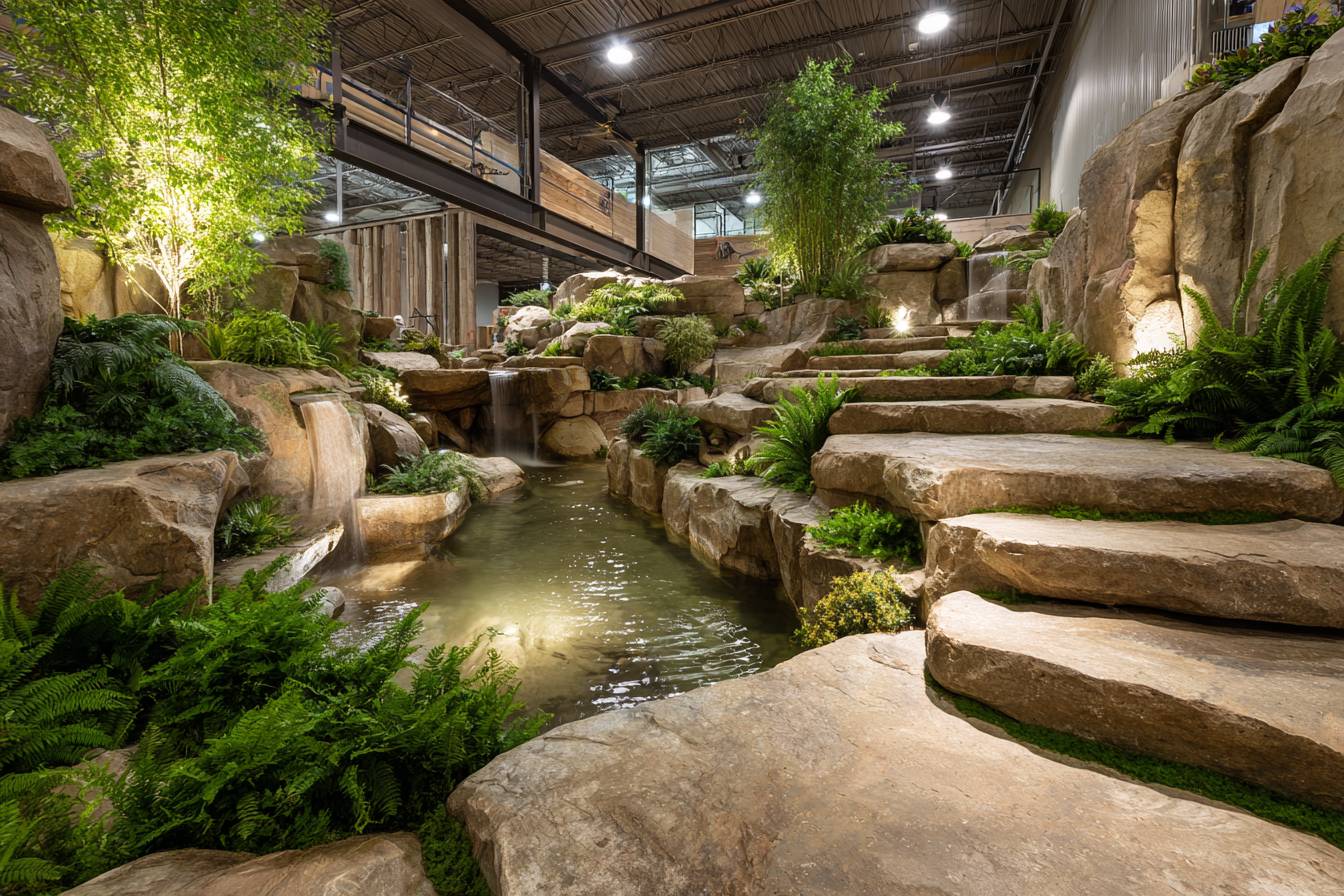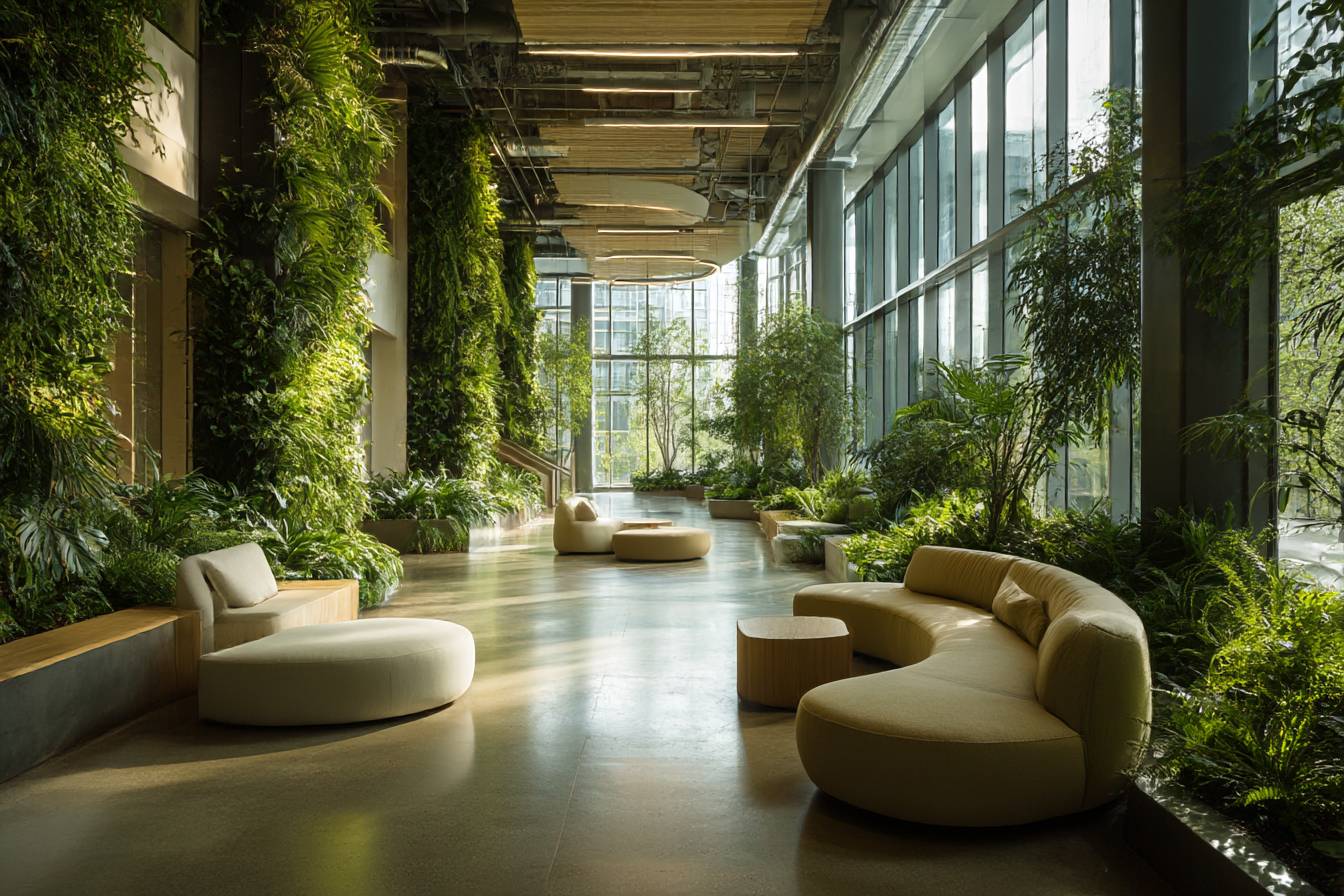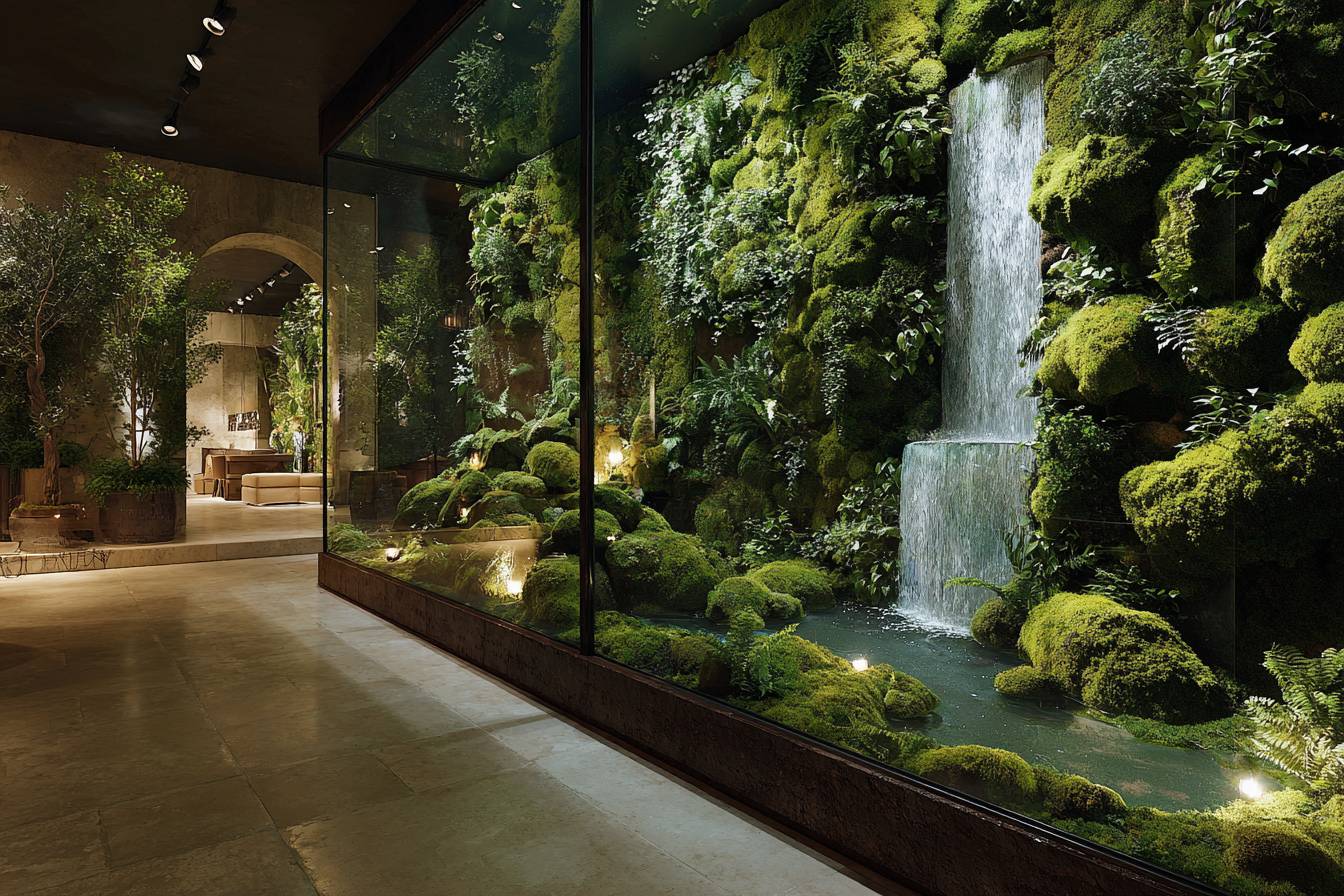Look, I’ll be honest – when I first started getting obsessed with workspace optimization and biophilic design elements, I had no idea how to actually measure whether any of this stuff was working. I was just going by feel. “Do I focus better with this plant here?” “Does this lighting make me less tired?” Not exactly scientific.
But being a data analyst by nature, I eventually got frustrated with the vague assessments. I needed actual metrics. Especially when I started sharing my workspace experiments with other remote workers and they’d ask, “How do you know it’s not just placebo effect?” Fair question. I didn’t know.
So I started diving into research on how to properly evaluate biophilic spaces and measure their impact on productivity and wellbeing. Turns out there’s a whole field of post-occupancy evaluation that most people never hear about – basically, testing whether design elements actually deliver on their promises after people have been using them.
Here’s what I’ve learned from applying these methods to my own workspace optimization and helping other remote workers test their setups.
**Start with baseline data (I wish I’d known this earlier)**
My biggest mistake early on was making changes to my workspace without recording proper baseline measurements. I switched to a window desk, added plants, upgraded my lighting – all at once. My productivity metrics improved, but I had no way to know which changes actually mattered.
Now I track everything for at least two weeks before making any modifications. Focus time duration, task completion rates, energy levels throughout the day, even subjective mood ratings. I use a simple spreadsheet that takes about 30 seconds to update each day. Nothing fancy, just consistent measurement.
When I helped a coworker evaluate his home office setup, we tracked his productivity for a month before he added any biophilic elements. Then we introduced changes one at a time – first natural lighting improvements, then plants, then background nature sounds. The baseline data showed that lighting had by far the biggest impact (35% improvement in sustained focus time), while plants provided a smaller but still measurable benefit (12% improvement in afternoon energy levels).
Without that baseline comparison, he would have credited everything to the expensive plants he bought, when actually the $40 full-spectrum light was doing most of the work.
**Mix objective and subjective measurements**
I track both hard productivity metrics and how I actually feel working in the space. The objective stuff includes time spent in focused work states, number of breaks needed, task completion rates, and even heart rate variability when I’m wearing my fitness tracker during work.
But I also record subjective measures – stress levels, whether I’m looking forward to starting work in the morning, if I find myself procrastinating more or less than usual. Both matter.
Sometimes the objective metrics look good but the subjective experience is terrible. I tried this elaborate multi-monitor setup that technically increased my task completion speed by about 8%, but made me feel overwhelmed and scattered. The numbers said it was working, but I dreaded sitting down at my desk. That told me the setup wasn’t sustainable long-term.
Other times the subjective improvement is dramatic but harder to measure objectively. When I added plants to my visual field, I didn’t see huge changes in task completion rates, but my self-reported stress levels dropped significantly and I found myself actually enjoying being in the workspace instead of just tolerating it. That’s valuable data too.
**Observe actual behavior, not just intentions**
This is where I see a lot of people fool themselves about their workspace changes. They set up this beautiful reading nook with plants and natural light, then wonder why they never actually use it for focused work. But if you track where you actually spend your time, you often discover the gap between what you think you want and what you actually use.
I started using a simple time-tracking app that logs which areas of my workspace I’m in throughout the day. Sounds obsessive, but it revealed some interesting patterns. That cozy armchair I thought would be perfect for creative work? I used it maybe 10 minutes total over a month. Meanwhile, I was spending way more time at my standing desk than I’d realized.
One remote worker I know set up time-lapse photography of his office (just for his own analysis) and discovered he was unconsciously avoiding the expensive “biophilic” corner he’d created because the plant positioning was creating glare on his screen at certain times of day. The photos showed him consistently choosing the more conventional desk setup instead. Without that behavioral observation, he would have kept wondering why his focus wasn’t improving despite the “improvements.”
**Track the right operational metrics**
Beyond productivity, I’ve started monitoring metrics that reflect the overall health of my work situation. Sick days, sleep quality, weekend recovery time, even how much coffee I need to stay alert. These aren’t direct measures of biophilic effectiveness, but they’re outcomes that matter for long-term work sustainability.
Since optimizing my workspace for natural light and adding plants, I’ve needed about 30% less caffeine to maintain the same energy levels throughout the day. My sleep quality scores (tracked through my fitness device) improved by about 15%. I take fewer breaks but feel less drained at the end of the workday.
A friend who’s a freelance graphic designer started tracking client feedback ratings before and after she optimized her home studio with better natural lighting and natural materials. Her ratings didn’t just improve – they improved most dramatically for projects that required sustained creative focus. That’s the kind of operational impact that translates directly to career outcomes.
**Test over time, not just initially**
The novelty effect is real. Any change to your workspace feels good for the first week or two just because it’s different. That’s why I now plan evaluation periods at specific intervals: initial reaction (1-2 weeks), adjusted experience (6-8 weeks), and longer-term impact (4-6 months).
Some changes that felt great initially lose their impact over time. That water fountain I bought for background nature sounds? Loved it for the first month, then started finding it distracting. Other changes take time to show their full benefit. The plants in my office didn’t seem to make much difference at first, but after a few months of having living, growing things in my visual field, I noticed I was much more resilient to stressful work situations.
I track what I call “adaptation metrics” – how my response to the same environmental changes shifts over time. The standing desk that felt awkward initially now correlates with my most productive work sessions. The full-spectrum lighting that seemed harsh at first has become something I actively seek out when I need to focus.
**Get specific about what you’re testing**
Instead of vague questions like “Does biophilic design improve my productivity?”, I test specific hypotheses: “Do plants within my direct line of sight reduce the frequency of attention breaks during analytical tasks?” “Does natural light from my left side versus overhead affect my energy levels during afternoon work sessions?”
This specificity has led to some surprising discoveries. I found that plants at desk level don’t impact my focus much, but having larger plants at eye level when I look up from my screen significantly reduces eye strain and mental fatigue. That’s actionable information I can apply and share with others.
The research on attention restoration theory suggests that views of nature help reset cognitive focus, so I specifically tested whether brief glances at my small indoor garden during work breaks affected my ability to return to concentrated tasks. The data showed a clear correlation – after “micro-breaks” looking at plants, I could sustain focus for an average of 23 minutes versus 17 minutes after breaks looking at my phone or just staring at the wall.
**Don’t ignore the failures**
Not everything I’ve tested has worked, and documenting those failures has been just as valuable as tracking successes. The expensive ergonomic equipment that made my posture worse. The complex lighting system that improved my morning energy but tanked my evening wind-down routine. The background nature sounds that helped with focus but made video calls problematic.
I keep a “failed experiments” log because understanding why something doesn’t work often provides better insights than understanding why something does work. When the elaborate plant wall system I tried to install became a maintenance nightmare that actually increased my stress levels, I learned that the complexity of biophilic elements matters as much as their presence.
**Look for unexpected benefits**
Some of the most interesting findings from my workspace optimization haven’t been direct productivity improvements but secondary effects I wasn’t tracking initially. The plants I added for air quality and stress reduction have made me much more aware of seasonal changes – I notice when they need more water in winter, when they start growing more actively in spring. That connection to natural cycles has improved my overall work-life rhythm.
The natural lighting optimization that was supposed to help with focus has also dramatically improved my video call presence. Multiple colleagues have commented that I look more alert and professional on camera, which matters for a remote worker. That wasn’t a metric I was tracking, but it’s become a significant career benefit.
**Use tools that make sense for your situation**
I’m not running a research lab, so I don’t need expensive physiological monitoring equipment. But there are consumer-level tools that provide useful data: fitness trackers for heart rate variability and sleep quality, air quality monitors for understanding environmental conditions, time-tracking apps for behavioral patterns, even simple mood tracking apps for subjective measures.
The key is consistency in measurement rather than sophistication of tools. I get better insights from three months of daily entries in a basic spreadsheet than from one week of detailed biometric monitoring that I can’t sustain.
**Share your data (but be honest about limitations)**
When I write about my workspace optimization experiments, I always include the actual numbers and acknowledge the limitations. Sample size of one, specific to my work type and personal preferences, measured with consumer-grade tools over limited time periods. But that transparency has led to interesting collaborations with other remote workers who share their own data.
We’ve started an informal network of people testing similar workspace modifications and comparing results. Not every finding replicates across different people and work situations, but patterns are emerging. Natural light consistently shows benefits for most people. Plants help with some individuals more than others. Background nature sounds work well for analytical tasks but can interfere with creative work.
The most valuable insight from all this measurement and testing? Small, evidence-based changes to your physical work environment can have measurable impacts on both productivity and quality of life. But only if you actually track whether they’re working instead of just assuming they are.
And honestly, having data to back up your workspace choices is pretty satisfying when people question why you “need” that expensive full-spectrum light or multiple plants in your office. It’s not about need – it’s about optimized performance based on actual measurement, not just wishful thinking.
James is a data analyst who applies the same spreadsheet logic he uses at work to optimizing his home office. He experiments with light, plants, sound, and setup to see what really improves focus and energy for remote workers — and he shares the data-backed results.





